Harvesting Honey From Combs. What to look for when you want to harvest honey, and the process before swinging the combs.
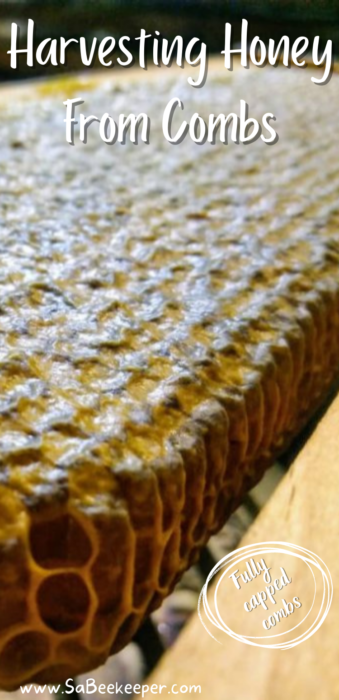
What to look for when Harvesting Honey From Combs
A few things that you need to know and be aware of when you want to go and “rob” the bees for honey. Firstly only inspect the hives for honey when it is the correct time to do so. It differs per country and areas. Winter, summer or spring.
Winter you would not want to rob the beehive as the bees would need the honey stored for food, during the cold season to stay alive. That’s their food storage as there will not be flowers with nectar and pollen, especially if it snows.
Spring time you will have to view the combs as many honey bee queens start to lay eggs in the combs when there are an abundance of flowers that produce pollen.
Summer time you will also have to view the combs. But probable a better time to view.
Inspect the hives by opening the super from the top.
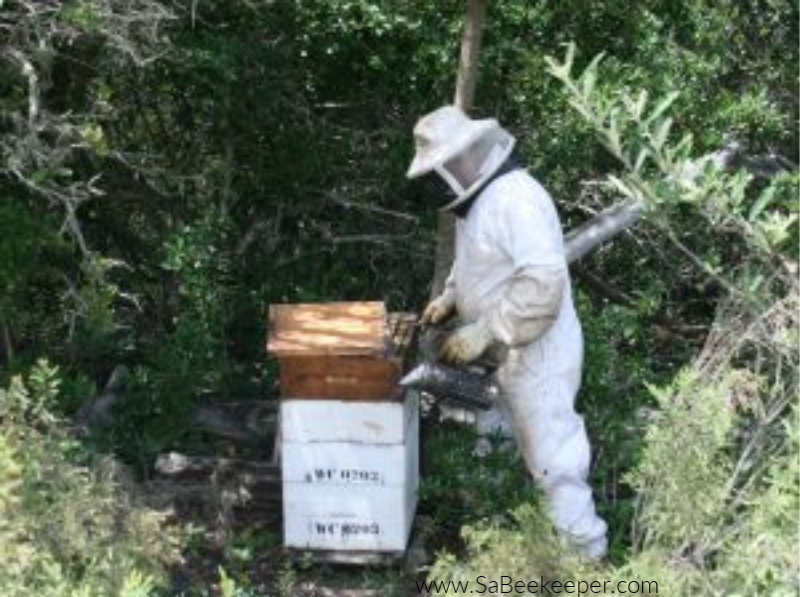
Once the lid is taken of then you can view the frames to see what the state of the wax is from the top.
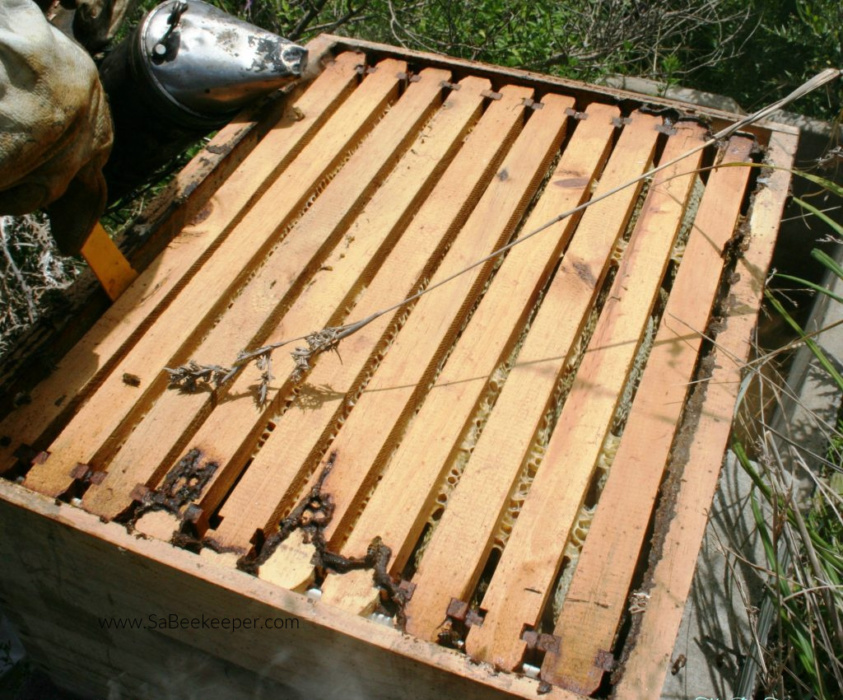
The wax will be build between the frames and maybe the honey comb are capped.
The next step is to remove the frames and view the combs.
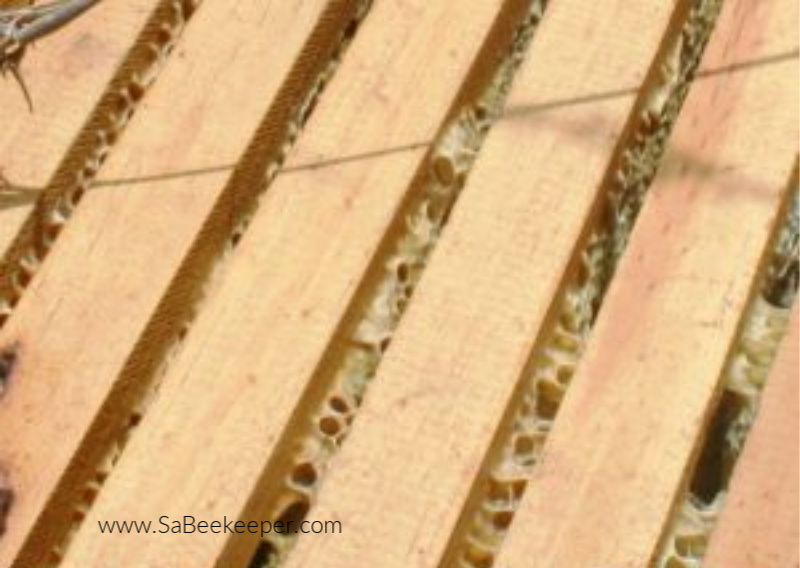
The combs that are newer will look like these below. Very thin and soft and not as thick as an older comb. You can also notice that part of the comb has been capped. That means that the other cells have not been filled properly and the honey water content will be higher.
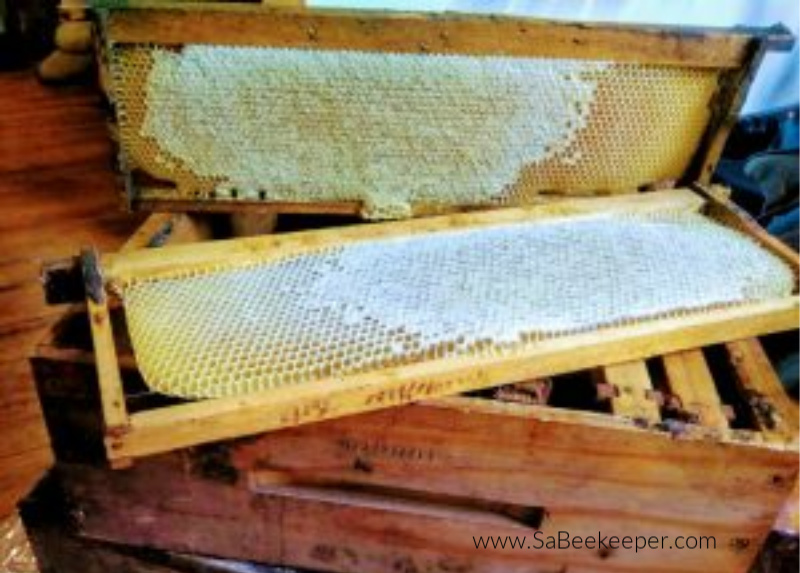
The image below shows a fully capped honey comb and it is older and thicker. This is what you are looking for to harvest the honey from the comb.
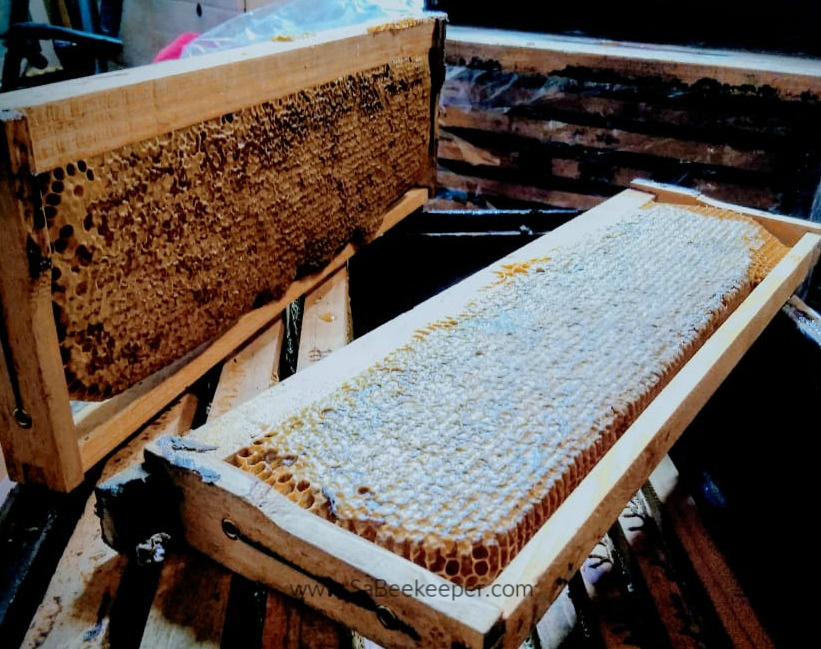
Uncapping the wax comb and Swinging frames
Collect the fully capped honey combs and replaced the empty supers with empty already swung honey combs, for the immediate use for the bees.
Cover the full supers with a sack or cloth to prevent the bees from trying to obtain the honey from the combs. As this also will stop you transporting them to the honey swinging room. Making it impossible to swing honey with to many bees in the room.
The image below shows you that the capped honey tops must be removed to obtain the honey to flow out. You do get all sorts of capping tools for this job. All that is needed is to skim the top wax cap off from the combs and leave the cells that are full of honey behind. Collect the wax capping and place in a sieve to drain the remaining honey out over night.
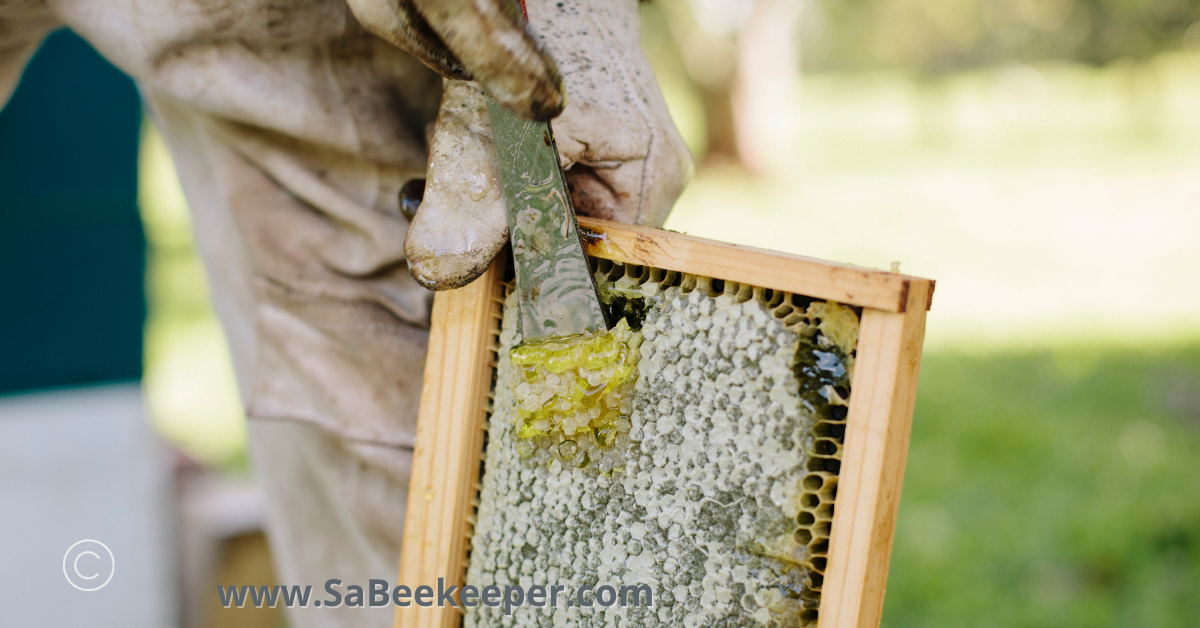
In your honey swinger you place the uncapped honey combs in this manner. Until the swinger is filled then swing the combs and the honey will get swung out.
Harvesting the honey
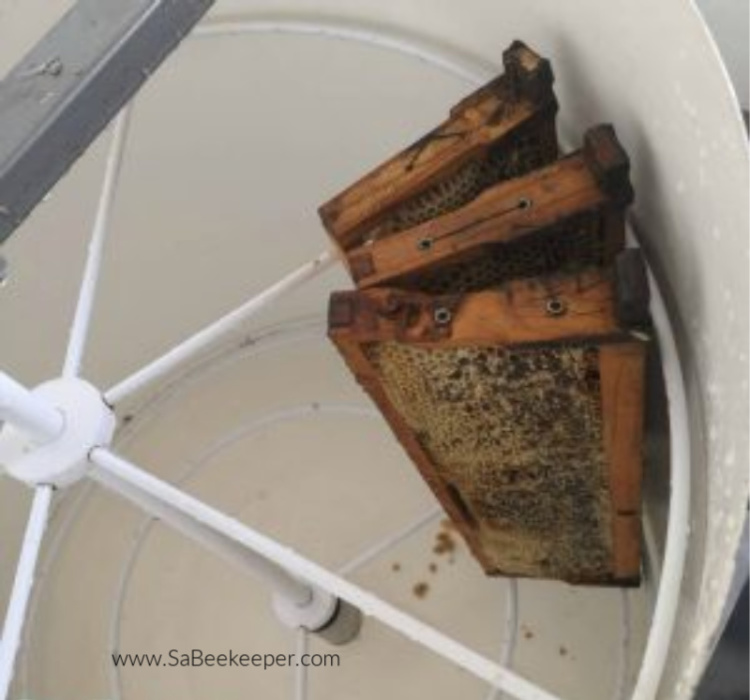
Bellow’s image shows you the fully packed frames to swing.

A valve is on the bottom and you would have to have a sieve and a bucket ready. Sieving the honey while it runs is best to collect any pieces of wax fallen from the combs. Clean the sieve repeatedly or replace it with a spare one. Then the honey fills a bucket and you continue in this manner.

Sieving the honey to prevent pieces of wax from being in the pure golden honey.
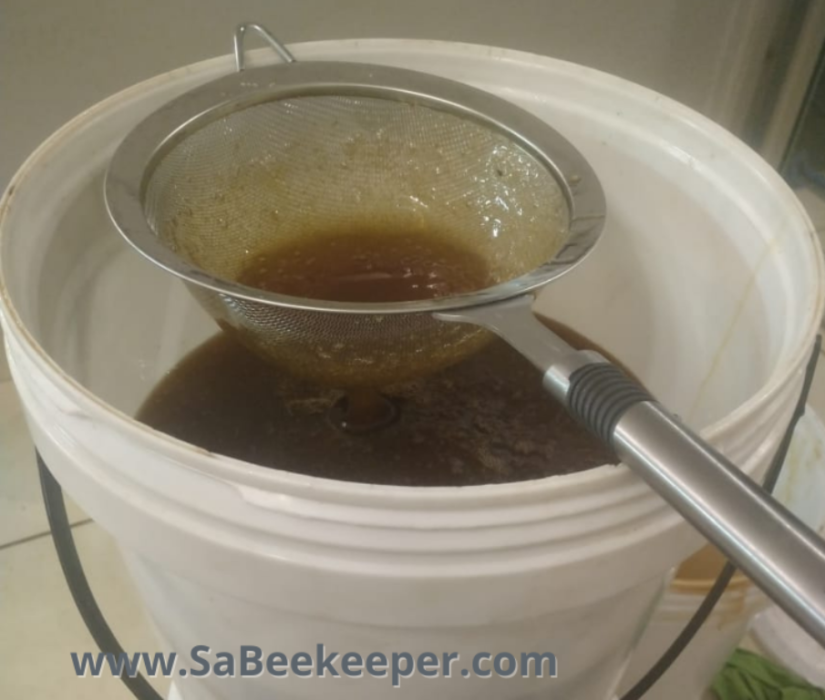
Once this method is done. Seal the buckets and leave overnight.
When filling honey in honey bottles it is suggested to obtain a 20 liter bucket with a tap at the bottom. Leaving it to stand overnight will allow any particles of wax that was not caught in the sieve will have floated to the top of the honey bucket. It can then be scooped off,
This will provide you with good clean honey to flow through the tap into bottles.
To view some Remedies made with honey and recipes that use honey view these links below.
Leave a Reply